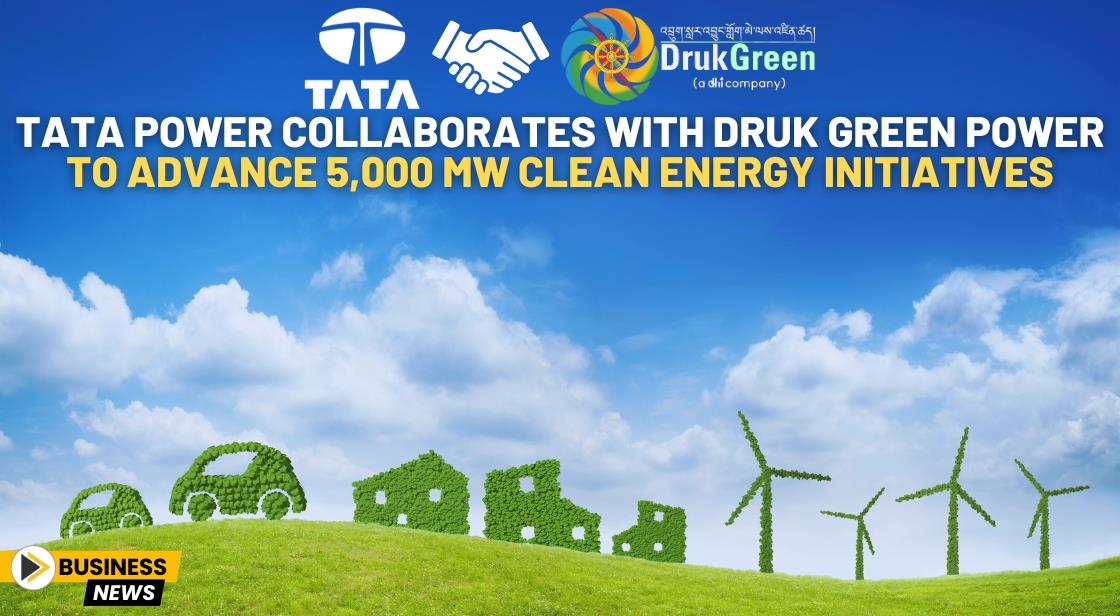Tata Power Collaborates with Druk Green Power to Advance 5,000 MW Clean Energy Initiatives

News Synopsis
On November 19, Tata Power Company Ltd announced a strategic collaboration with Druk Green Power Corporation Ltd (DGPC), a subsidiary of Bhutan’s Druk Holding and Investments Ltd. The partnership aims to develop at least 5,000 MW of clean energy generation capacity in Bhutan, aligning with Bhutan’s energy sector vision to achieve 25,000 MW of capacity by 2040 for energy security and regional integration.
Focus on Hydropower and Solar Energy Projects
The collaboration includes the phased development of renewable energy projects, with 4,500 MW allocated to hydropower and 500 MW to solar energy. Key hydropower initiatives include the 1,125 MW Dorjilung HEP, the 740 MW Gongri Reservoir, the 1,800 MW Jeri Pumped Storage, and the 364 MW Chamkharchhu IV. Solar projects will be spearheaded by Tata Power Renewable Energy Ltd (TPREL), a Tata Power subsidiary.
Tata Power’s Investment in Khorlochhu Hydroelectric Project
As a precursor to this partnership, Tata Power recently acquired a 40% stake in the 600 MW Khorlochhu Hydroelectric Project, investing ₹8.30 billion. The project will require over ₹69 billion for development and is part of Tata Power’s commitment to expanding its renewable energy footprint in Bhutan.
A History of Collaboration in Bhutan’s Energy Sector
Tata Power and DGPC’s collaboration dates back to 2008 when they partnered to develop the 126 MW Dagachhu Hydropower Plant, Bhutan’s first Public Private Partnership in the hydropower sector. Tata Power also operates a 1,200 km Tala transmission line, which facilitates the transmission of clean energy from Bhutan to India. This history underscores the strong bilateral ties and trust between the two companies.
Diversifying Bhutan’s Energy Portfolio
Bhutan aims to diversify its energy portfolio beyond traditional hydropower, incorporating solar and geothermal energy. This diversification strategy will be supported by innovative project structuring and financing through strategic partnerships like this one. The Royal Government of Bhutan and the Government of India are key supporters of this initiative, further strengthening regional energy collaboration.
Regional Impact and Clean Energy Integration
This collaboration represents one of the largest partnerships in Asia’s clean energy sector. Both Tata Power and DGPC have established reputations for excellence in the energy industry and a shared commitment to harnessing Bhutan’s hydropower potential. The clean energy generated through this partnership will address growing energy demands in both Bhutan and India, ensuring a reliable and sustainable energy supply.
CEO’s Vision for a Sustainable Future
Dr. Praveer Sinha, CEO and Managing Director of Tata Power, emphasized the significance of this partnership, stating, “Tata Power’s collaboration with Druk Green Power Corporation reinforces our position as the most preferred clean energy partner in the region. Together, we are building 5,000 MW of clean energy capacity, shaping a new energy era that supports both countries' energy needs with reliable, round-the-clock clean energy.”
Boost to Tata Power’s Stock Performance
Tata Power’s strategic initiatives in Bhutan have positively influenced its market performance. On the Bombay Stock Exchange (BSE), shares of Tata Power closed at ₹408.10, marking an increase of ₹3.35 or 0.83%. This growth reflects investor confidence in Tata Power’s expanding role in the clean energy sector.
A Visionary Collaboration for the Future
The partnership between Tata Power and DGPC exemplifies the growing focus on sustainable and regional energy solutions. By leveraging Bhutan’s hydropower resources and integrating solar projects, this initiative is set to play a transformative role in Asia’s transition to clean energy, fostering economic growth and energy security for the region.
You May Like









